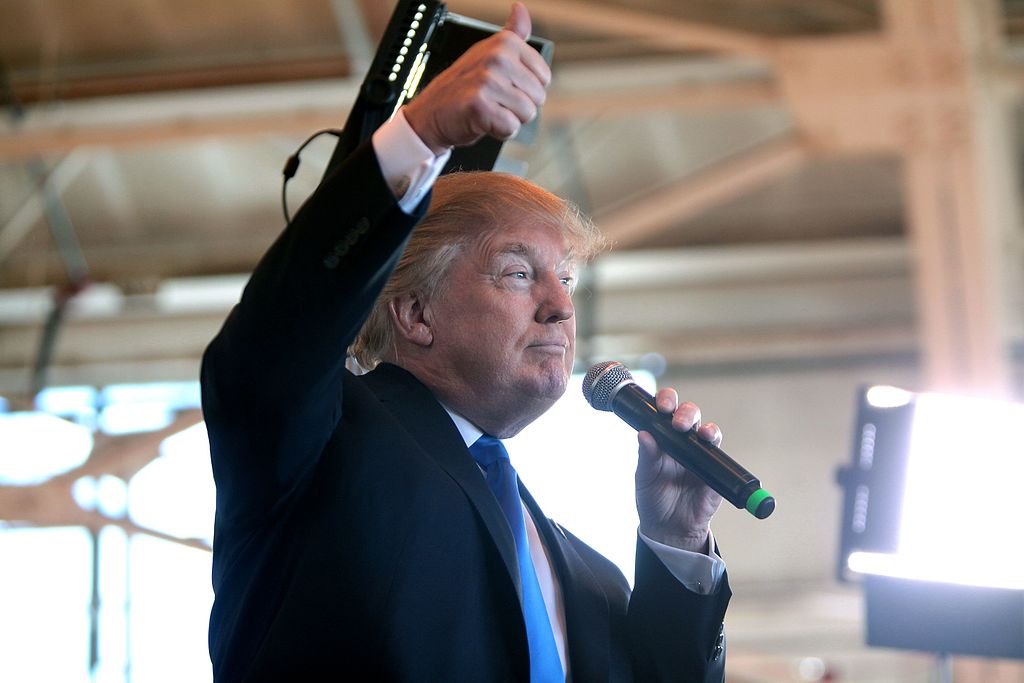Donald Trump’s proposed strategy to reduce healthcare premiums during his presidency has ignited heated debates among policymakers, healthcare professionals, and citizens. With soaring premiums being a major concern for families across the United States, Trump’s plan promises to deliver financial relief by revamping the insurance market and encouraging competition among providers. While many applaud his efforts to tackle rising costs, critics question whether his approach will benefit all Americans equally.
Increasing Competition Among Healthcare Providers
A central pillar of Trump’s strategy is fostering competition among insurance providers to drive down costs. By loosening federal regulations and empowering states to oversee their healthcare markets, the plan seeks to give consumers more choices while incentivizing insurers to lower premiums.
Proponents argue that increased competition could lead to more affordable options for families struggling to keep up with healthcare costs. Small business owners, in particular, could benefit from reduced expenses when offering employee health benefits.
However, healthcare experts caution that deregulation might lead to uneven implementation across states, potentially creating disparities in care. Additionally, they warn that cheaper plans could compromise essential coverage, leaving policyholders vulnerable to unforeseen medical expenses.
Expanding Health Savings Accounts and Tax Incentives
Another key aspect of Trump’s proposal focuses on expanding Health Savings Accounts (HSAs) and providing tax incentives to help Americans manage their medical expenses. Under the plan, individuals and families could save more money tax-free, offering a buffer against rising healthcare costs.
Supporters hail this initiative as a practical way to empower citizens, giving them greater control over their healthcare spending. However, critics argue that this approach primarily benefits higher-income earners who can afford to set aside significant savings, potentially leaving low-income families at a disadvantage.
Mixed Reactions from the Public
As details of Trump’s plan circulate, social media users have taken to platforms like Twitter to voice their opinions. Here’s what some netizens are saying:
- @AffordableCareNow: "Finally, a plan that tackles high premiums! Competition among providers is exactly what we need."
- @HealthReformCritic: "Lower premiums are great, but not at the expense of comprehensive coverage. Let’s not compromise quality."
- @SmallBizAdvocate: "If this helps small businesses provide insurance, I’m all for it. Let’s see how it unfolds."
- @FamilyFirst2025: "Expanding HSAs is a win for families, but what about those who can’t afford to save?"
- @RuralHealthMatters: "State oversight is risky. Rural areas need federal support to ensure access to affordable care."
- @PatientAdvocate88: "Transparency in pricing is key. Hope this plan addresses hidden costs in healthcare services."
Challenges Ahead for Trump’s Reforms
While Trump’s plan offers promising solutions, implementing these changes will not be without challenges. Ensuring that competition among providers results in meaningful savings for consumers is a complex task. Additionally, balancing affordability with adequate coverage remains a significant hurdle.
Healthcare advocates stress the importance of maintaining protections for individuals with pre-existing conditions, as any gaps in coverage could leave millions vulnerable. Moreover, the reliance on state-driven reforms raises concerns about potential inconsistencies in access and affordability across the nation.
Donald Trump’s vision to reduce healthcare premiums represents an ambitious attempt to address one of America’s most pressing issues. While the plan has sparked hope for lower costs and increased choices, its success will depend on transparent execution and bipartisan cooperation. As the debate continues, Americans are watching closely, eager for meaningful reform in the healthcare system.



 Fernando Haddad Confirms He Will Not Run for Office in 2025, Signals Possible Exit as Brazil’s Finance Minister
Fernando Haddad Confirms He Will Not Run for Office in 2025, Signals Possible Exit as Brazil’s Finance Minister  U.S. House Advances GOP Healthcare Bill as ACA Subsidies Near Expiration
U.S. House Advances GOP Healthcare Bill as ACA Subsidies Near Expiration  Trump Administration Plans Major Increase in Denaturalization Cases for Naturalized U.S. Citizens
Trump Administration Plans Major Increase in Denaturalization Cases for Naturalized U.S. Citizens  Union-Aligned Investors Question Amazon, Walmart and Alphabet on Trump Immigration Policies
Union-Aligned Investors Question Amazon, Walmart and Alphabet on Trump Immigration Policies  Trump Expands U.S. Travel Ban to Antigua and Barbuda, Dominica, Sparking Economic Fears in the Caribbean
Trump Expands U.S. Travel Ban to Antigua and Barbuda, Dominica, Sparking Economic Fears in the Caribbean  Kennedy Center Reportedly Renamed Trump-Kennedy Center After Board Vote
Kennedy Center Reportedly Renamed Trump-Kennedy Center After Board Vote  Jared Isaacman Confirmed as NASA Administrator, Becomes 15th Leader of U.S. Space Agency
Jared Isaacman Confirmed as NASA Administrator, Becomes 15th Leader of U.S. Space Agency  Trump Administration Proposes Sweeping Limits on Gender-Affirming Care for Children
Trump Administration Proposes Sweeping Limits on Gender-Affirming Care for Children  U.S. and China Push for Ceasefire as Thailand–Cambodia Border Clashes Escalate
U.S. and China Push for Ceasefire as Thailand–Cambodia Border Clashes Escalate  UN Warns Gaza Humanitarian Aid at Risk as Israel Registration Rules Threaten NGO Operations
UN Warns Gaza Humanitarian Aid at Risk as Israel Registration Rules Threaten NGO Operations  Trump Attends Dover Ceremony Honoring U.S. Personnel Killed in Syria
Trump Attends Dover Ceremony Honoring U.S. Personnel Killed in Syria  Canada Signals Delay in US Tariff Deal as Talks Shift to USMCA Review
Canada Signals Delay in US Tariff Deal as Talks Shift to USMCA Review  Republicans Raise National Security Concerns Over Intel’s Testing of China-Linked Chipmaking Tools
Republicans Raise National Security Concerns Over Intel’s Testing of China-Linked Chipmaking Tools  U.S.-Russia Talks in Miami Raise Hopes for Potential Ukraine War Deal
U.S.-Russia Talks in Miami Raise Hopes for Potential Ukraine War Deal  Trump Signals Progress in Ukraine Peace Talks Ahead of U.S.–Russia Meeting
Trump Signals Progress in Ukraine Peace Talks Ahead of U.S.–Russia Meeting  Syria, Kurds and U.S. Race to Show Progress on SDF Integration Deal
Syria, Kurds and U.S. Race to Show Progress on SDF Integration Deal 































